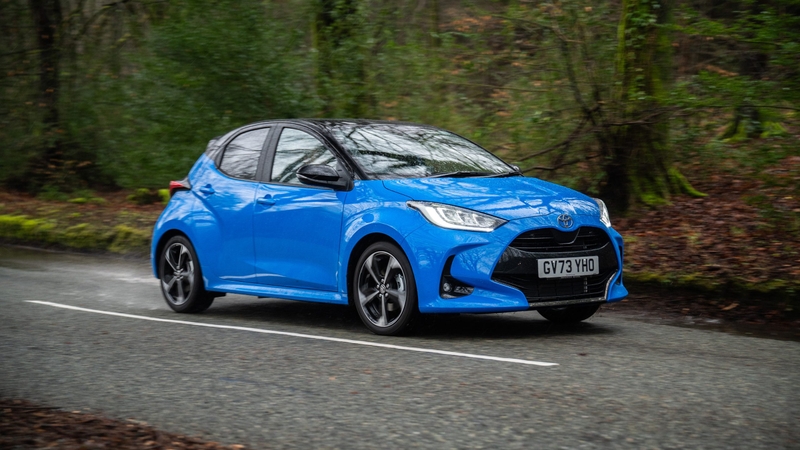
Honda Jazz interior, tech and practicality
Gallery
Comfort and visibility
Let’s start with visibility, which puts most modern cars to shame. The front pillars are split in two, with narrow supports sandwiching big front quarterlight windows. It’s clever engineering like this that means the Jazz isn’t the cheapest car to buy, but the upside is that you get an almost uninterrupted view out of the front. Rear visibility is pretty good, too, although, like all rivals, the rear pillars create small blind spots.
The Jazz has soft, pillowy seats that give a real ‘living room’ feel. They’re upholstered in classy grey fabric, which suggests Honda has paid attention to how the surfaces look and feel. That’s also true of the dashboard ahead of you, which has soft-touch materials in clever places and a smattering of white and chrome trim to break up the grey. The two-spoke steering wheel is a cool touch, too.
There are still a lot of physical controls, and these are all well marked and easy to hit on the move. It’s a bit like one of those big-button phones. What’s more, all the materials are screwed together tightly. Our test car had roughly 40,000 miles on the clock, and there were no rattles and the interior surfaces still looked new. That’s a good indicator of how the car will stand up to family life.
Standard equipment
Up until 2023, the Jazz range started with SE trim. This comes stuffed with active safety features – there’s a speed limiter that can link to the traffic sign recognition system and automatically keep you at the posted speed limit, adaptive cruise control that’ll stop you getting too close to the car in front on the motorway, hill-start assist and a lane-keeping system that can nudge you back into the centre of your lane if you get too close to the white line. Honda’s Magic Seats come as standard, as do all-round electric windows, auto wipers, Bluetooth and LED headlights with auto high-beam assistance.
SR is the spec we’d recommend, given it includes the full media system rather than just a basic radio display. It also comes with alloy wheels, parking sensors, power-folding door mirrors and an alarm.
EX is top of the main Jazz lineup, and comes with heated front seats, keyless entry and start, a rear-view camera and built-in sat nav.
Beyond that is the Crosstar EX trim, which boasts SUV-like roof rails, body cladding and a slightly raised ride height – both for a more rugged look and to make it easier to get in and out. Rivalling the Ford Fiesta Active, the Crosstar is the one that gets the water-repellent upholstery plus a premium audio system.
The Jazz got a mini facelift in 2023 – you might notice its new grille – and the trim levels were changed at the same time. Elegance is first and sits somewhere between SR and EX versions, while Advance largely matches EX but with a sportier look. Speaking of which, the Advance Sport trim level gets steering wheel paddles, metal-effect pedals, an exhaust finisher and even a spoiler. Crosstar Advance is the new name for the SUV-styled range-topper.
Infotainment and audio
The Jazz’s infotainment system is everything you’d hope it would be from a sensible brand like Honda. It’s not so big that it takes up the whole dashboard, and it’s positioned well so you don’t have to take your eyes off the road for long periods of time. Its graphics are easy to read and its tile system is very easy to navigate around, so you don’t have to spend ages understanding the system before every journey.
Unless you’re happy with the basic radio unit you get in SE spec, you’ll need to choose at least SR spec. Having the bigger screen means you also get Apple CarPlay and Android Auto, so you can use your phone’s apps instead – and charge your phone at the same time!
Every Jazz also gets a seven-inch digital instrument cluster in place of traditional analogue dials. This isn’t the biggest screen on the market and, with lots of information to display, can get quite busy and hard to read.
Rear seat space
The Jazz puts many bigger and more expensive cars to shame when it comes to rear seat space. It’s easy to forget the Jazz is so small – especially when you slide the front seats all the way back and find there’s still plenty of legroom in the back. Headroom is also excellent. With these qualities and the comfy seats, the Jazz is a great place for rear-seat passengers – and they get a little phone holder stitched into the seatback (although only the EX and Crosstar trims get rear USBs).
Like most superminis, three adults will just about be able to squeeze into the back row, but they won’t be comfortable.
Unlike any other supermini, the Jazz’s rear seat bases can flip up vertically against the seatbacks. Honda rightly calls this its ‘Magic Seats’ system, and this clever bit of thinking means you can carry tall and bulky items in the rear footwells. With a low transmission tunnel, you can even carry a bike in the space where the rear seats would be.
Boot space
A 300-litre boot is perfectly reasonable for a car like this, and it’s about the same as the space you get in the Jazz’s main rivals – the Toyota Yaris and Renault Clio hybrids.
Besides a small step at the back of the boot, the space is really useful and square. With a really low load lip, you get a tall space and it’s easy to haul bulky items into the boot. Flip the seats down and you’ve got 1,205 litres of space available.
As well as big door pockets, the Jazz’s cabin offers a pair of cupholders on the dashboard and two separate gloveboxes.






















































